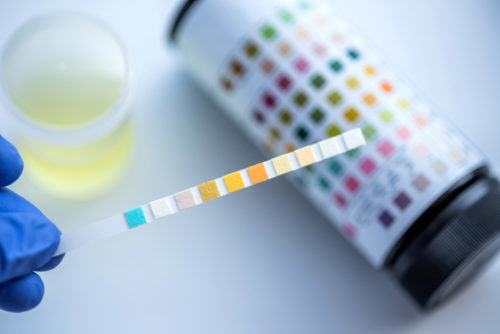
Urinalysis is a routine test that reports the physical and chemical properties of urine. It is used mainly to assess the health of the kidneys and urinary system, but it can also reveal problems in other organ systems, and is important for diagnosing metabolic diseases such as diabetes mellitus. It is a valuable test in both healthy and sick animals and should be included in any comprehensive evaluation of a pet’s health.
There are four parts to a urinalysis.
- Assess appearance: color and turbidity (cloudiness).
- Measure the concentration (also known as the density) of the urine.
- Measure pH (acidity) and analyze the chemical composition of the urine.
- Examine the cells and solid material present in the urine using a microscope.
Most of the analysis is done on whole urine (as it comes from the animal), but the microscopic examination of cells and solid material requires the sample to be concentrated or sedimented. To do this, urine is placed in a tube and then centrifuged (spun in a circle at very high speed) to force the cells and solid material to settle to the bottom. This accumulated material, or sediment, is collected and spread on a slide, and then examined under a microscope.
Contact our animal hospital today to learn more about urinalysis testing for your pet.
